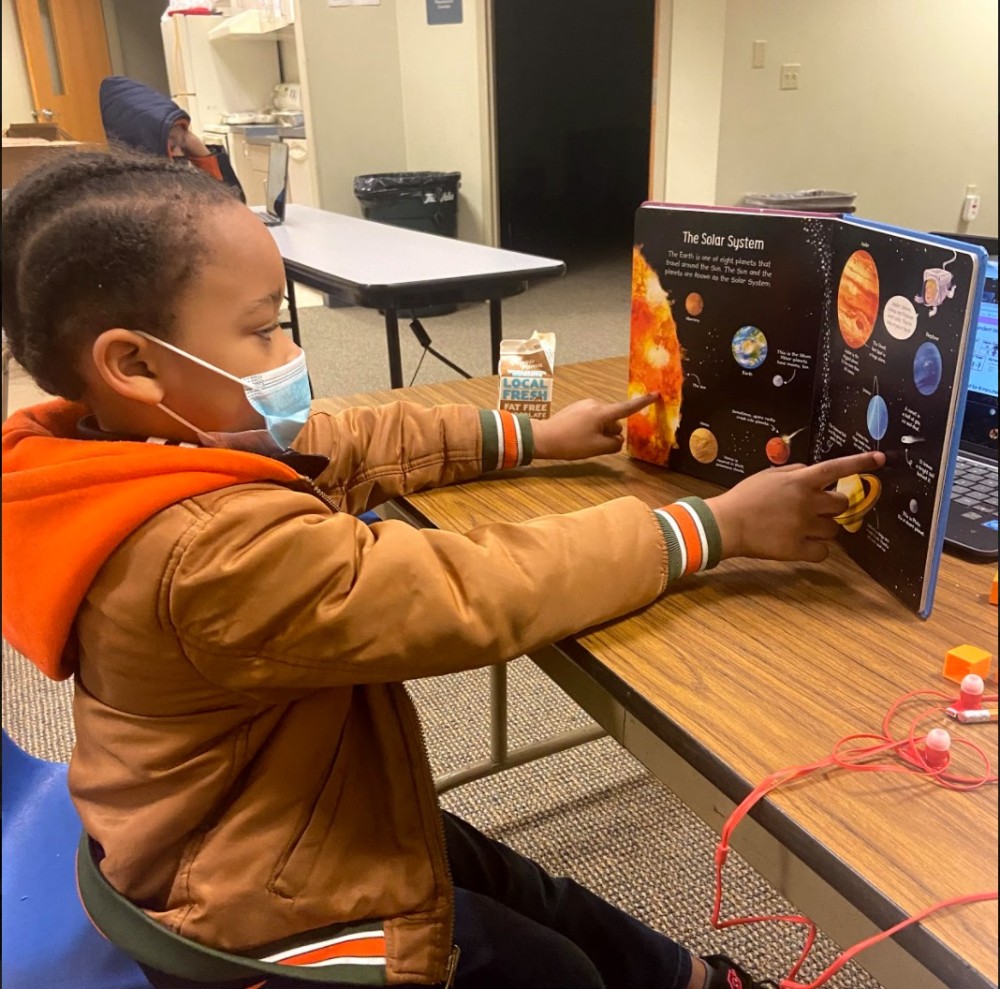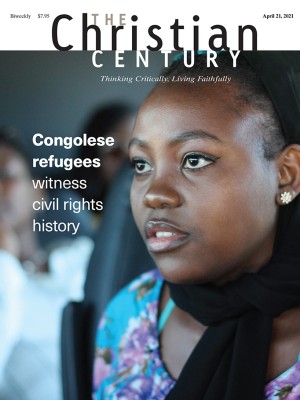Local Black church creates ‘lifesaver’ program for families struggling with virtual learning

In March 2020, when parents were thrust into the so-called new normal, Jodie Pope Williams, an academic adviser at Madison Area Technical College in Madison, Wisconsin, had been able to keep her chin up: working from home and online learning felt fresh well into April and May, she said.
Then the summer rolled around, and things took a turn for the worse.
She found herself in the same place yet again: tired, anxious, and crying, trying to balance her own remote work with her son’s virtual learning. She watched as her son, Cam, a quick-witted, outgoing child, grew despondent.
Pope Williams thought about the school-to-prison pipeline and about how, in just a year, Cam would be in the third grade, the year reading scores become predictive of the likelihood that a child will graduate. She reshuffled her work schedule to make more time to support him through school. But most days, it didn’t feel like enough.
Read our latest issue or browse back issues.
Then, in September, Pope Williams came upon a Facebook notification from Mt. Zion Baptist Church, the 110-year-old congregation she had been a part of since the age of 12. The church planned to give families free access to an academic support program called School Without Walls, the announcement read.
The offering would run three and a half hours every morning, five days a week. For Pope Williams, School Without Walls was a place she could trust, a place that felt like home.
“I know they’re going to support him, in terms of health and academically,” she said. “It was a lifesaver for us.”
Across the country, some Black families have expressed reluctance over sending their children back to school, even as some of them have returned to in-person learning. Their wariness reflects the disproportionate toll the virus has taken on communities of color and a mistrust of public schools, which long predates the pandemic but has intensified during it.
In contrast, African American churches have been havens for decades. To many congregants, including Pope Williams, Mt. Zion isn’t just a place of worship: it’s family.
The church’s prominent role in the city and the involvement of renowned University of Wisconsin education scholar Gloria Ladson-Billings—also a longtime Mt. Zion congregant—has helped School Without Walls attract a range of partners.
The United Way, Dane County Department of Human Services, and anonymous donors all contributed staff funding. Edgewood College, a local liberal arts school, supplied and paid for several education majors to be classroom assistants. And the Madison Metropolitan School District provided meals so the kids could have free breakfast, lunch, and a snack every day.
School Without Walls’ robust community partnerships and financial support translates into an enviable staff-to-
student ratio: eight tutors for a maximum of 30 students a day, ranging in age from pre-K through fifth grade. Since the start of the pandemic, the initiative has seen about 70 students come and go.
Faleshuh Walker is a church member who works with School Without Walls and sends two of her three children there. While Walker spends part of her day assisting kids with their academic work, her true passion lies in helping them transform their leftover energy into art. She oversees the creation of paintings, book illustrations, and self-portraits.
One one occasion, she invited children of color—the program is predominantly kids of Black, Latinx, and Hmong origin—to draw their favorite cartoon characters in their own nationalities. That effort meant everything to Pope Williams—who, as the weeks dragged by, watched Cam perk up.
Pope Williams and Walker both said that, in a world where Black men constitute just 2 percent of the American teaching corps, the presence of Mt. Zion’s youth minister, Richard Jones Jr., who leads the program, was an added bonus.
“I see value in my son seeing himself in these types of roles,” Pope Williams said. “Most Black men in Wisconsin that are in school districts are in special ed or disciplinary roles. To have a Black man leading the program is a great representative for my child.”
For Monica Warren, the program is so valuable that her family plans to relocate from their home, one exit away from Mt. Zion, to a house that’s closer, about a 15-minute walk.
Her son, ten-year-old Jeremiah, has been attending School Without Walls since the fall. While he misses being at school, he has friends in the program. Before School Without Walls existed, Warren brought Jeremiah with her to Edgewood College, where she works as a cook.
In March, after a year of remote learning, the school district announced a return to buildings for the city’s youngest learners. The announcement created a challenging decision for Warren, Walker, and Pope Williams about their kids’ education. School Without Walls will remain open for the rest of the school year, and the congregation intends to build a new community center to house School Without Walls and its other social services, including a food pantry and a mental health center established in October.
Warren doesn’t know when she’ll send Jeremiah back to school, because it wasn’t immediately clear when the district would reopen buildings for kids his age. Walker is considering homeschooling her kids post-pandemic, encouraged by the time she’s spent with them at School Without Walls.
As for Pope Williams, a few weeks after the program celebrated Cam’s eighth birthday with a cake dropped off by his dad, she sent him back to his charter school.
“Seeing that School Without Walls was able to keep the kids safe, and that people were taking it seriously, I could look at sending him back,” she said. “I can’t say it enough: during this time, it really saved me.” —The 74
This story is part of the SoJo Exchange from the Solutions Journalism Network, a nonprofit organization dedicated to rigorous reporting about responses to social problems.





